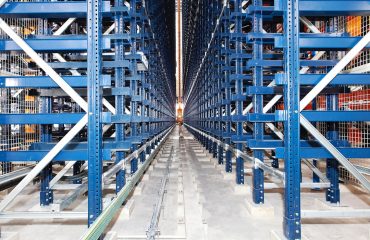Superalloy steels are a class of high-performance materials renowned for their exceptional strength, resistance to corrosion and oxidation, and ability to withstand extreme temperatures. These remarkable properties make them indispensable in a wide range of demanding applications across various industries. This blog post delves into the fascinating world of superalloy steels, exploring their key characteristics and showcasing their diverse applications.
1. Aerospace: Reaching for the Stars with Superalloys
The aerospace industry is arguably the largest consumer of superalloy steels. These alloys are critical components in jet engines, where temperatures soar to thousands of degrees Fahrenheit. Turbine blades, combustor casings, and other critical parts require materials that can withstand these extreme conditions without compromising performance or structural integrity. Nickel-based superalloys, in particular, are favored due to their excellent high-temperature strength, creep resistance (resistance to deformation under sustained stress), and oxidation resistance. The demand for lighter, more fuel-efficient aircraft continues to drive innovation in superalloy development, with researchers constantly striving to create alloys with even better performance at higher temperatures.
Beyond jet engines, superalloys also find applications in rocket engines, spacecraft components, and other high-stress, high-temperature environments within the aerospace sector. Their ability to maintain strength and stability even under extreme pressure differentials is crucial for the safe and reliable operation of these systems.
2. Power Generation: Fueling Efficiency and Reliability
The energy sector relies heavily on superalloys for efficient and reliable power generation. Gas turbines, used in both power plants and industrial applications, operate at incredibly high temperatures, requiring materials capable of withstanding significant thermal stresses. Superalloys are essential for the construction of turbine blades, disks, and casings, ensuring long operational life and minimizing downtime. Their resistance to corrosion from combustion byproducts also extends the lifespan of these critical components.
Furthermore, superalloys are increasingly employed in advanced nuclear power systems. Their resistance to radiation damage and high-temperature creep makes them suitable for components within nuclear reactors, contributing to the safety and longevity of these power sources. The ongoing development of advanced nuclear technologies further fuels the demand for improved superalloy materials.
3. Chemical Processing: Withstanding Harsh Environments
The chemical processing industry often deals with highly corrosive substances and extreme temperatures. Superalloys, particularly those with enhanced corrosion resistance, are crucial in various applications within this sector. They are used in the construction of reactors, heat exchangers, and other components that come into contact with aggressive chemicals and high-temperature processes. The ability of superalloys to resist degradation in harsh environments ensures the safety and efficiency of chemical plants, minimizing the risk of equipment failure and environmental contamination.
Specific alloy compositions are tailored to withstand specific chemical environments. For instance, alloys with high molybdenum content offer excellent resistance to chloride-induced corrosion, while others with added chromium provide enhanced oxidation resistance at elevated temperatures.
4. Medical Implants: A Vital Role in Healthcare
While less common than in industrial applications, superalloys also play a crucial role in the medical field. Their biocompatibility and high strength make them suitable for certain types of medical implants, particularly those requiring high durability and resistance to wear. For example, some specialized superalloys are used in orthopedic implants, such as hip and knee replacements, where the implant must endure significant stress and remain stable over long periods.
Ongoing research focuses on enhancing the biocompatibility of superalloys to minimize the risk of adverse reactions and improve the longevity of these life-enhancing implants. The unique properties of superalloys make them a promising material for future advancements in medical implant technology.
5. Automotive and Industrial Applications: Beyond the High-Profile Sectors
Although less prominent than aerospace and power generation, superalloys also find niche applications within the automotive and broader industrial sectors. High-performance engines in racing cars and specialized vehicles may utilize superalloys for components requiring extreme durability and high-temperature resistance. In industrial settings, superalloys can be found in specialized machinery, such as high-temperature furnaces and processing equipment, where their strength and resistance to harsh conditions are invaluable.
The increasing demand for efficiency and performance across various industrial applications is driving further research and development in superalloy technology, leading to the discovery of new alloys and expanded applications across a wider range of industries.
In conclusion, superalloy steels are vital materials driving innovation across multiple sectors. Their unique combination of properties makes them essential for applications demanding exceptional performance under extreme conditions. As technology continues to advance, the role of superalloys in shaping the future of various industries is only set to grow.
SEO Tags:
- Superalloy Steel
- Superalloy Applications
- High-Temperature Alloys
- Nickel Superalloys
- Corrosion Resistant Steel




